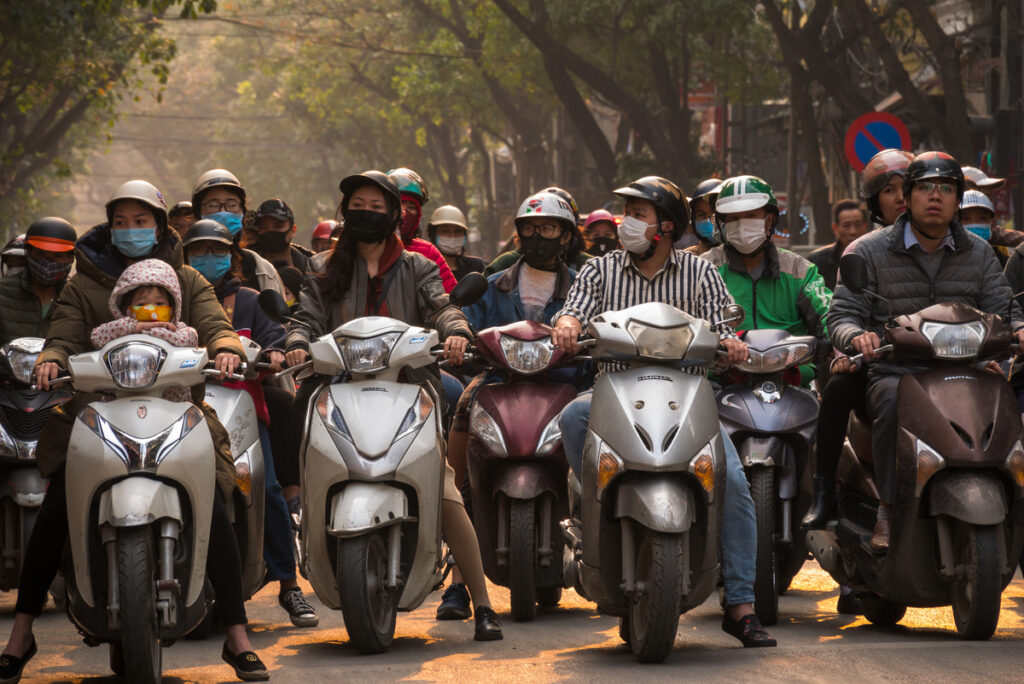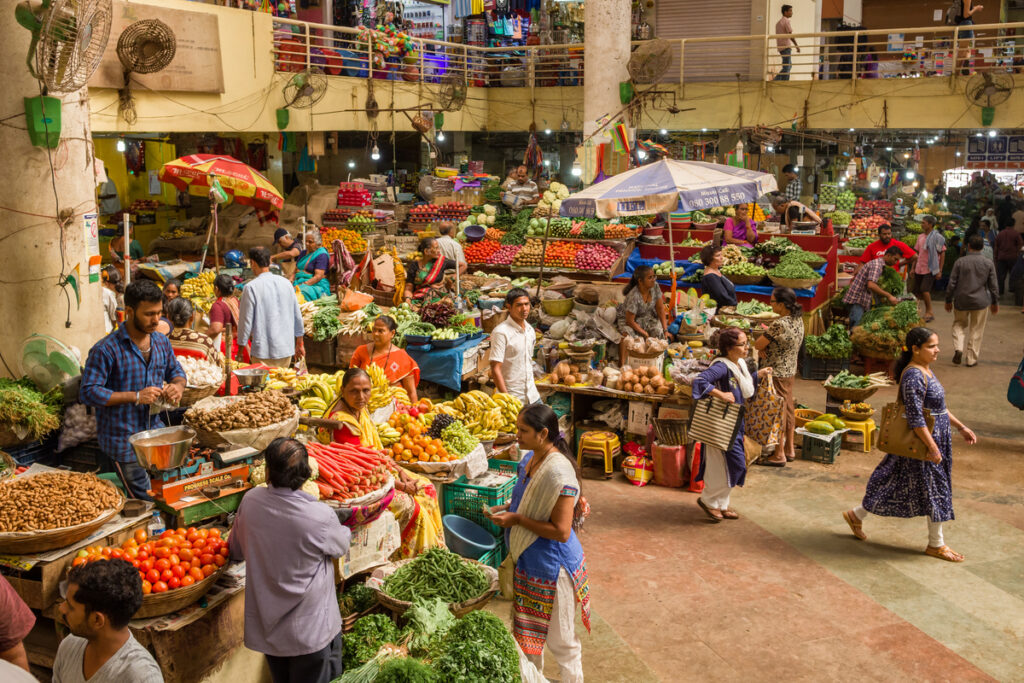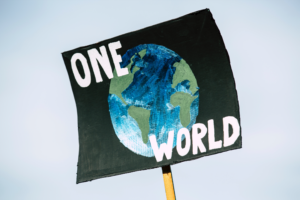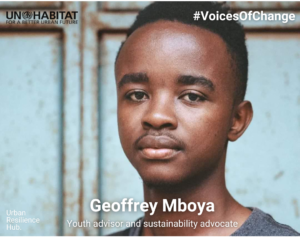We live in an era where 56.2 % of the total world population lives in urban areas brimming with overpopulated locations, inadequate facilities, and theft due to unemployment.1
While people are protesting for climate action all over the world, climate change is not the only environmental impact due to emission, we are challenged with. These impacts are threatening to every aspect of our lifestyle, ranging from Skin cancer due to Ozone layer depletion, Terrestrial acidification, Human toxicity, to Particulate matter formation causing breathing issues.
Whilst people living in poverty are seldom the principal creators of environmental degradation, they often bear the brunt of the damage and are often caught in a vicious circle, whereby the disadvantaged communities are forced to deplete resources to survive, and this degradation of the environment further impoverishes people. When this self-reinforcing circle becomes extreme, people are forced to move in masses to marginal and ecologically fragile lands or to cities causing large-scale urban migration. Thus, apart from human health, the environmental impacts due to emissions also affect our social life, leading to major income disparity, poverty, inadequate living standards, theft, resource shortage, and many more issues.2

Image: People on motorcycles wear face masks for protection from COVID-19 and pollution, Hanoi, Vietnam © Ruangwit Ratchatawiset.
The question which lies here is why people don’t conserve and care about the nature and environment. People no longer feel a sense of belonging to the natural world. Instead, they feel more and more divided, internally and externally. For many people, nature is now only a source of food and materials for things to make, own, and consume. In that notion, there is no sense of connection, sacredness and no gratitude for the sacrifices made by our living relatives of the natural world, like the animals, plants, trees, and insects. When we have gratitude and deeply care for all living things, we no longer just consume our relations. Instead, we honour our relations for their intrinsic worth by appreciating deeply the spirit of life that is also within each of them and their right to live.3
Need for a Sustainable Economy and a Resilient Future
To achieve the UN’s SDG11 – Sustainable Cities and communities, there is a need for smart urban planning that creates affordable, inclusive, healthy, and resilient cities with green and sustainable living conditions and systems.
However, this may seem like an overly ambitious goal, one can strategically achieve it by convincing the masses about its importance. A sustainable economy and a resilient future cover all three dimensions – Social progress (People), Economic development (Profit), and Environment Preservation (Planet), also known as the Triple Bottom Line.
People
Research reveals that environments can increase or reduce our stress, which in turn impacts our health. What you are seeing, hearing, experiencing at any moment is changing not only your frame of mind, but how your nervous, endocrine, and immune systems are working.4 Intact nature provides a buffer between humans and disease, and emerging diseases are often the results of encroachment into natural ecosystems and changes in human activity. In the Amazon, for example, deforestation increases the rates of malaria, since deforested land is the ideal habitat for mosquitoes. Deforested land has also been linked to outbreaks of Ebola and Lyme disease, as humans come into contact with previously untouched wildlife.5
Other Benefits:
- More Natural Light
- Improved air quality due to abundance of tree plantation
- Accessible and Inclusive for all.
Profit
Conventional Economic growth in emerging markets has helped to raise living standards—but inevitably it has also generated massive consumer and industrial waste. Many municipalities in these markets spend up to half their budgets on solid-waste management. Innovative businesses, however, drawing on circular-economy principles, are finding ways to convert the trash into income streams.6 Making these efficiency upgrades creates jobs, both temporary and ongoing. Sustainable cities and communities will lead to new employment opportunities for the people in the sustainable industries leading to better economic growth. Additionally, buying and selling locally will lead to more economic profit to the local and small businesses making our systems more regenerative.
Other Benefits:
- Reduced cost of Potable Water due to rainwater harvesting and net-zero building
- Reduced cost of energy (Utilizes solar energy)
- Reduced Transport cost of native products used during production and construction
- Recycled / Reused / Repurposed items used.
Planet
The benefits of Sustainable Economic Development impact more than just those in poverty. For example, reducing energy use and expanding public transit options leads to less air pollution, which can improve asthma and heart conditions. Efficient homes and businesses will be more comfortable and safer. Reduced dependence on individual auto travel will make streets less congested, saving drivers time and money, and enhancing overall livability.7
Other Benefits:
- Achieving Zero Net Energy Building
- Rainwater harvesting and other sustainable practices
- Regenerative and Healthy Nature
If we can achieve this, urban places will be better places to live in. Places where a sustainable lifestyle will eradicate poverty and makes people healthy due to better environment quality! A cradle-to-cradle model, we hope to inculcate at every sphere of our lifestyle!
Thus, we need to build modern, resilient, and sustainable cities for all of us to survive and flourish socially, environmentally, and financially.
How to do
A government can play an active or passive role in a nation’s economy. States select policies depending on the type of role they generally play in the economy.
Traditionally, environmental policy has been a matter of static prescriptions. The instruments used have been mostly regulatory. Fiscal instruments, by contrast, are incentive-based. Regulatory instruments include, for example, bans, prohibitions, or technical standards requiring a particular production method or technology (UNEP 2011). Because they leave little room for adaptation, regulatory instruments are also known as command-and-control tools. (UN CC- Green Fiscal Policy)
Green fiscal policy is concerned with aligning both fiscal and budgetary activities with the sustainable development priorities of a given government. With proper green fiscal policy intervention, we can accelerate out of this crisis. Green Fiscal Policy is an approach to rearranging government spending and revenue to advance sustainability. When fiscal instruments are used, consumers and producers can choose among goods and services based on their financial capacity.
Intending to advance the Sustainable Development Goals (SDGs) of countries, green fiscal policy also supports the 2030 Agenda. While it supports some of the environment-related SDGs directly, it also promotes SDGs that target non-environmental issues by providing effective economic instruments to improve the use of natural resources. In addition to the positive environmental impact from Green Fiscal Policy, it can also help in generating revenues (Taxes, fees, etc.) which can be further utilized to fund other sustainable alternative industries and employment creation.
Green Fiscal policy is a path towards achieving a Circular economy which is necessary for our sustenance. In a circular economy, well-being is no longer based on increased manufacturing and goods. Instead, products are shared, rented, repaired, maintained, upgraded, recycled, and reused by services and digital solutions. Consumption does not end but becomes more sustainable.8
A system change enabling people to travel on cars not owned by them rather rented or carpooled will be very beneficial. A system where people don’t buy Refrigerators, Air conditioners, or other devices, instead they rent it or buy the service. This way, The producer is still the owner and will be able to come up with innovations to utilize the old devices by refurbishment, recycling, or reusing some parts. The Life Cycle Cost and Analysis of the products will be more eco-friendly, sustainable, and worth the cost
Another problem that may arise is that People are habitual to their take-make-waste economy and it will be difficult to persuade them towards more regenerative strategies. The world consists of 7.8 billion people. Sensitizing them about new policies and system change will be a huge complication leading to high costs on the advertisement. However, with campaigns, lucrative deals, and negotiation, this challenge can be tackled.
Innovations and start-ups towards sustainable development must be supported and funded so that our transition towards a circular economy becomes as trouble-free as possible.
Government and citizens need to be familiar with the concept of Life cycle costing (LCC) which will enable them to see a wider picture and calculate the profits and benefits of an environment-friendly system in the long term.
Both McKinsey and the Ellen MacArthur Foundation have projected that circular economy methods could unleash a trillion dollars a year in cost savings. Individuals, Companies, and Nations that invest in Circular economy and Sustainable development are more likely to have better development outcomes such as more profit, welfare, Good Health, wellbeing, less poverty, and many more benefits aligning with the UN’s Sustainable Development Goals which are necessary for our future.
We’re living through one of the greatest historic shifts the world has ever seen. One era has ended, and the next has yet to begin. The pandemic is a portal between what our world was and what it can be. COVID-19 has laid bare the cracks in our old systems and institutions, and now we get to determine what our new world will look like. We have a once-in-a-lifetime opportunity to reimagine the world as it can be, not just as it is. I believe that we are the youth and we are the future of tomorrow. It’s high time now that we take charge of society and work towards its betterment for there is no future possible except a sustainable one.









